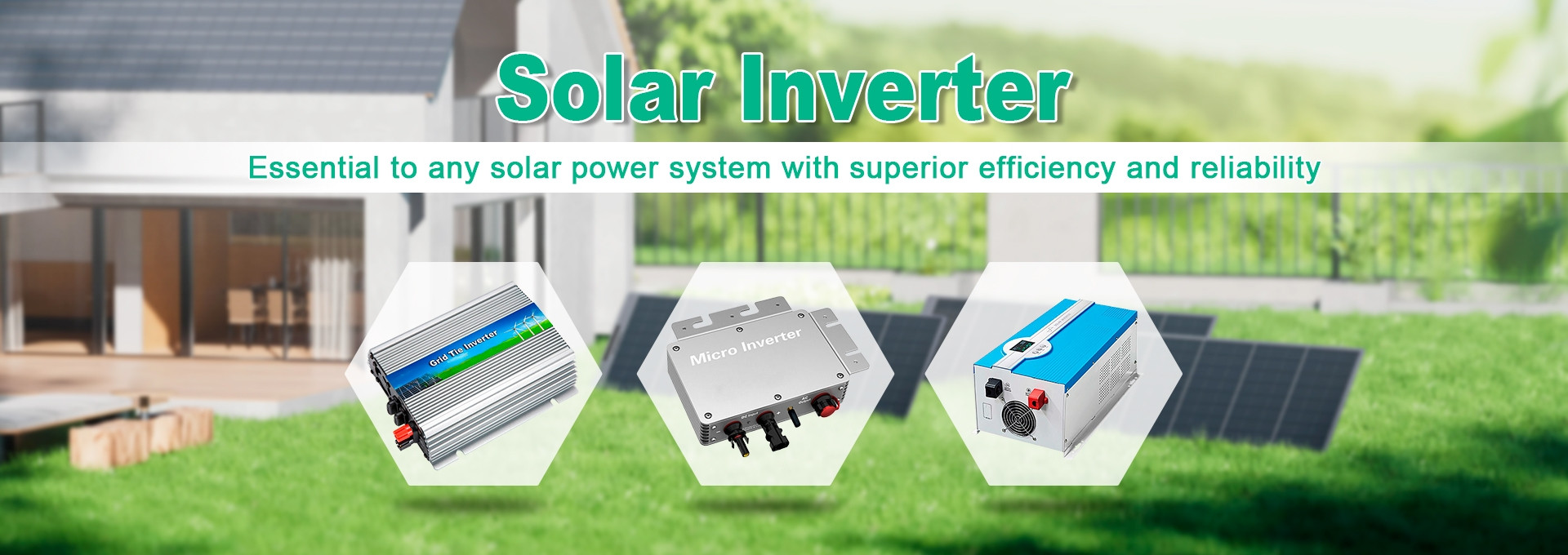

Inverter.com is one of the world's leading manufacturers of photovoltaic (PV) inverters, with a product lineup that covers a wide range of inverter types, especially its On Grid Inverter, which has a wide range of applications in solar power generation. This article will detail various aspects of inverter.com's On Grid Inverter, including its basic working principle, usage scenarios, technical features, and how to optimize performance through advanced Maximum Power Point Tracking (MPPT) technology. This article will also focus on the DC to AC conversion process, analyzing how these inverters can efficiently convert DC power at different voltage levels (e.g., DC 48V, DC 96V, or higher) to 110V or 220V AC power, which is commonly used in home or commercial applications, to maximize the benefits of solar power systems.
The primary function of the On Grid Inverter from inverter.com is to convert the DC power generated by solar panels to AC power and feed it directly to the utility grid. This conversion is critical because most appliances and grids use alternating current (AC), whereas solar panels generate DC power. inverter.com's On Grid Inverter not only performs an efficient DC to AC conversion, but also maximizes the output of the solar array through **Maximum Power Point Tracking Technology (MPPT)**, which ensures the efficient use of energy. efficient use of energy.
A typical On Grid Inverter can handle different ranges of DC input voltages, such as DC 48V, DC 96V, DC 200V, etc., and convert them to 110V or 220V AC output. These inverters typically support power ranges from 1 kilowatt (kW) to 10 kilowatts (kW) or higher and are suitable for residential, commercial, and industrial scenarios. For users, choosing the right inverter is not only about power requirements, but also about evaluating the DC input voltage range and output voltage to ensure the stability and safety of the grid connection.
In daily use, inverter.com's On Grid Inverter also features intelligent monitoring systems that allow users to view real-time data on power production, energy output, and other data, and adjust inverter settings to optimize power output.
In solar power systems, the efficiency of the PV inverter is critical to overall system performance. inverter.com's On Grid Inverter utilizes state-of-the-art MPPT (Maximum Power Point Tracking), a control algorithm used to extract the maximum power generated by the PV array. The main function of MPPT is to maximize solar cell output by constantly adjusting the operating point of the PV cells so that they are always at the maximum power point (MPP).
The output power of a PV cell can be affected by many factors, including light intensity, temperature, and shading. These variables can lead to instability in the output power of the PV cell. mPPT technology calculates the optimal operating point by continuously monitoring the voltage and current of the PV cell and comparing it to a preset voltage-current characteristic curve. Through this dynamic adjustment process, inverter.com's On Grid Inverter ensures that the panels operate at optimal efficiency, regardless of changing external conditions.
One of the most central functions of an inverter for a solar power system is to convert direct current (DC) to alternating current (AC). This is because solar panels generate DC power, while most household appliances and public grids use AC power. inverter.com's On Grid Inverter is capable of handling DC power with different input voltages, such as DC 48V, DC 96V, and even DC 200V, and converting it to the common AC 110V or AC 220V output.
This conversion process is realized through a series of complex electronic components. First, the DC current passes through the inverter's rectifier and is converted to an AC waveform. This AC waveform is then adjusted to match the frequency and voltage of the grid through a control circuit inside the inverter. This synchronization process ensures seamless integration of the solar power system with the utility grid.
